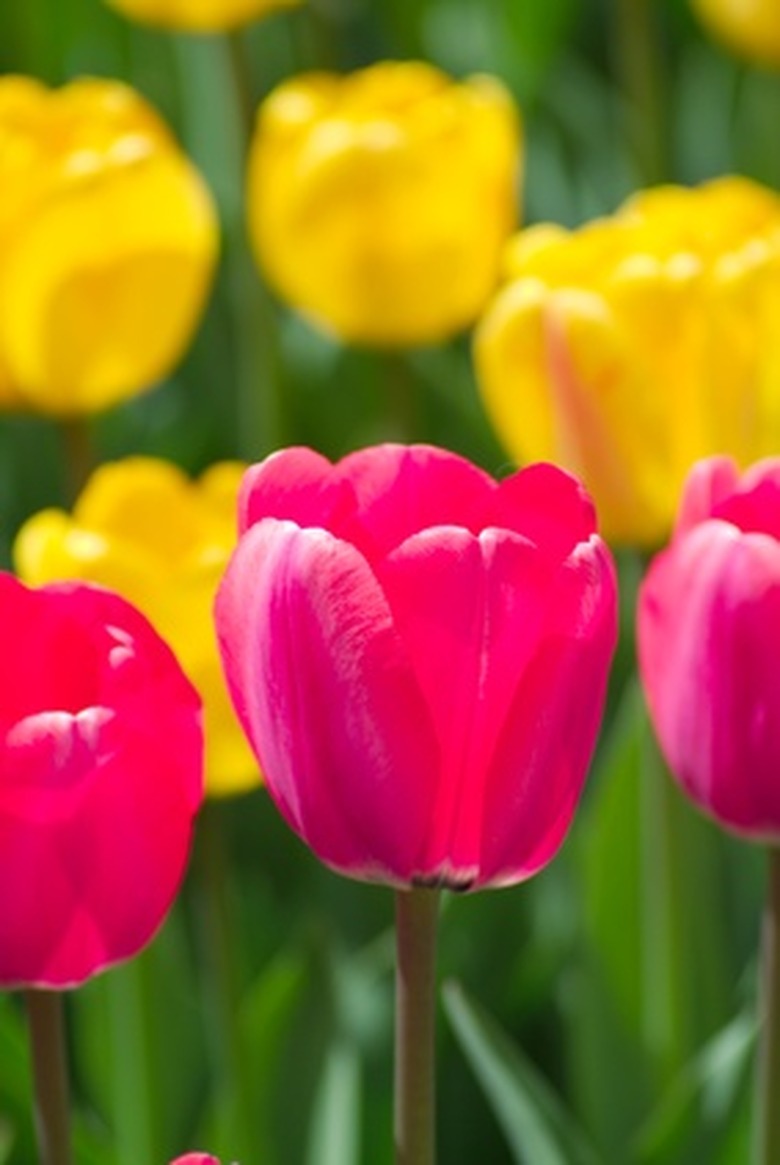Homemade Flower Bulb Cages
Things Needed
- Hardware cloth
- 16-gauge galvanized wire
- Wire cutters
- Pliers
- Tulip bulbs
- Trowel
Every year bulb growers wage war on gophers, moles and squirrels. These wild animals love bulbs almost as much as the growers who plant them. But it's not the flowering habits of bulbs that attract wildlife to the flowers. Instead, most pests are interested in the taste of bulbs such as tulips. Since you must dig up tulips and divide them every few years for improved blooming, the best method to protect these bulbs is with homemade wire cages. You can construct your own cages using hardware wire.
Step 1
Cut a rectangle of hardware cloth 12 inches long by 6 inches wide using wire cutters.
- Every year bulb growers wage war on gophers, moles and squirrels.
- Since you must dig up tulips and divide them every few years for improved blooming, the best method to protect these bulbs is with homemade wire cages.
Step 2
Cut a square of hardware cloth that measures 3 inches square.
Step 3
Cut two lengths of 16-gauge wire with wire cutters. One length should be 6 inches long and the other should be 12 inches long.
Step 4
Bend your hardware cloth rectangle into 4 sections widthwise and form a box with the hardware cloth. Using the pliers, twist the 6-inch long 16 gauge wire around the point where the two short sides of the rectangle meet to hold them together.
Step 5
Place the 3-inch square piece of hardware cloth wire over the top of the box. Twist the 12-inch piece of 16 gauge galvanized wire around the sides of the square to fasten it to the end of the box.
- Cut a square of hardware cloth that measures 3 inches square.
- Using the pliers, twist the 6-inch long 16 gauge wire around the point where the two short sides of the rectangle meet to hold them together.
Step 6
Dig a planting hole for your tulip bulb that is as deep and wide as the mesh cage. Place the cage in the hole so that the open side is pointing up and the closed side is flush with the bottom of the hole.
Step 7
Fill in the planting hole with dirt to a depth of 1 to 3 inches, depending on the depth your tulip bulb should be planted. Place the bulb in the cage on top of the fill dirt so that the flat side faces down. Cover the cage and the tulip with the remainder of the dirt. The top of the cage should be flush with the ground level.
